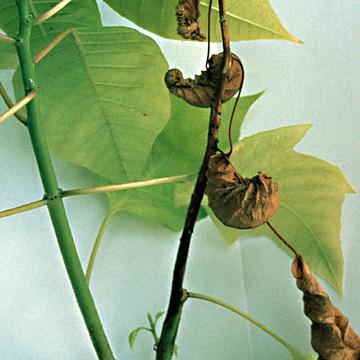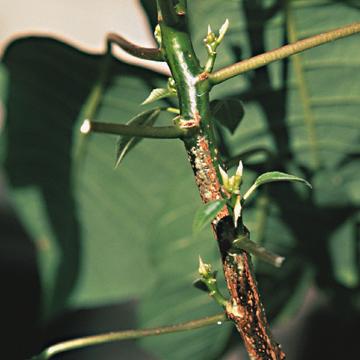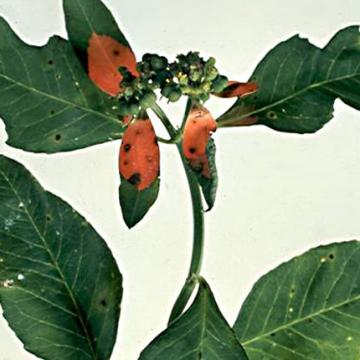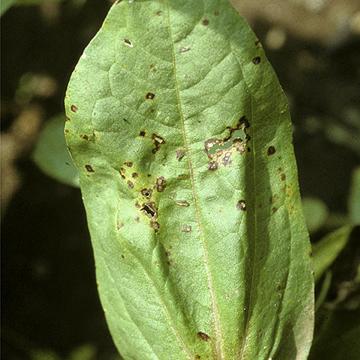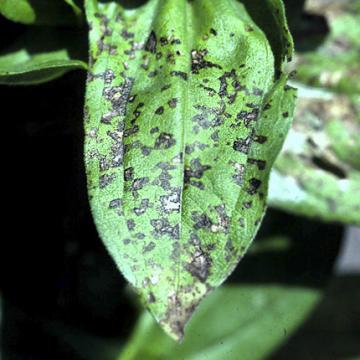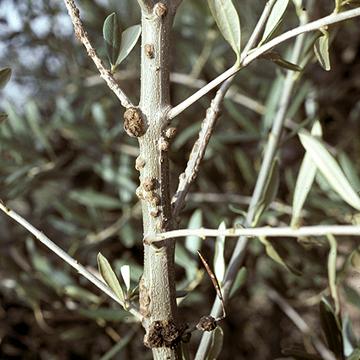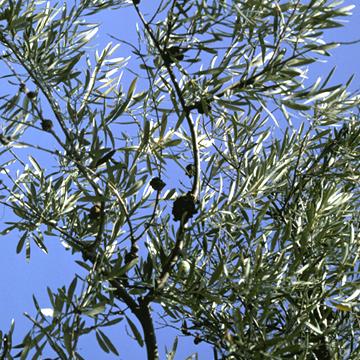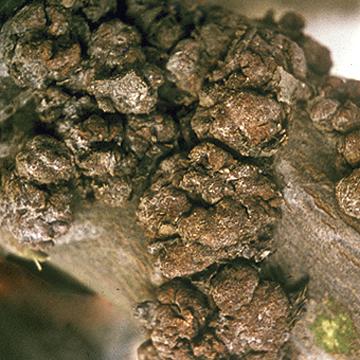DISEASE: Bacterial leaf spot (Blight)
HOST: Poinsettia
Blighted leaves and stems.
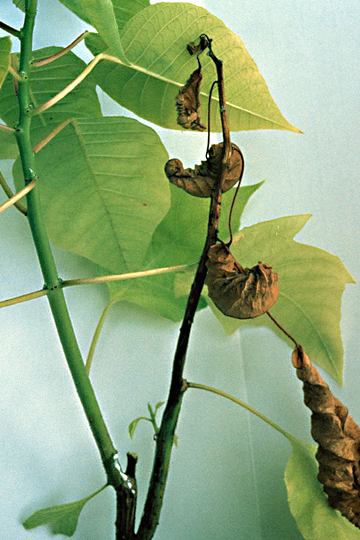
Bacterial leaf spot (Blight) | Poinsettia
DISEASE: Bacterial leaf spot (Blight)
HOST: Poinsettia (Euphorbia pulcherrima)
PATHOGEN: Curtobacterium flaccumfaciens pv. poinsettiae
SOURCE: APS
DISEASE: Bacterial leaf spot (Blight)
HOST: Poinsettia
Poinsettia with diseased stem. Woody stems may have a yellowed cortex and dark vascular tissues. The stem tip may curve with deformed terminal leaves.

Bacterial leaf spot (Blight) | Poinsettia
DISEASE: Bacterial leaf spot (Blight)
HOST: Poinsettia (Euphorbia pulcherrima)
PATHOGEN: Curtobacterium flaccumfaciens pv. poinsettiae
SOURCE: APS
DISEASE: Bacterial leaf spot (Blight)
HOST: Poinsettia
Leaves with small, dark spots, an early stage of disease.
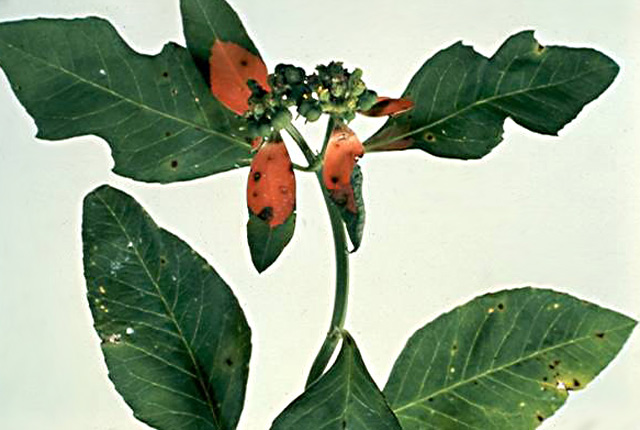
Bacterial leaf spot (Blight) | Poinsettia
DISEASE: Bacterial leaf spot (Blight)
HOST: Poinsettia (Euphorbia pulcherrima)
PATHOGEN: Curtobacterium flaccumfaciens pv. poinsettiae
SOURCE: A. Alvarez
DISEASE: Bacterial leaf spot
HOST: Zinnia
Leaf with small, brown spots.
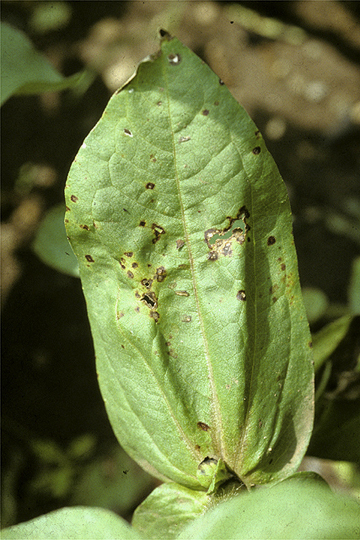
Bacterial leaf spot | Zinnia
DISEASE: Bacterial leaf spot
HOST: Zinnia (Zinnia violacea)
PATHOGEN: Xanthomonas campestris pv. zinniae
SOURCE: M. Goto
DISEASE: Bacterial leaf spot
HOST: Zinnia
Leaf with blackish, necrotic, angular spots.

Bacterial leaf spot | Zinnia
DISEASE: Bacterial leaf spot
HOST: Zinnia (Zinnia violacea)
PATHOGEN: Xanthomonas campestris pv. zinniae
SOURCE: M. Daughtrey
DISEASE: Olive knot
HOST: Olive
Multiple infections of young stems. The bacterium invades vascular tissues during certain times of the year and may be isolated from branches that appear healthy.
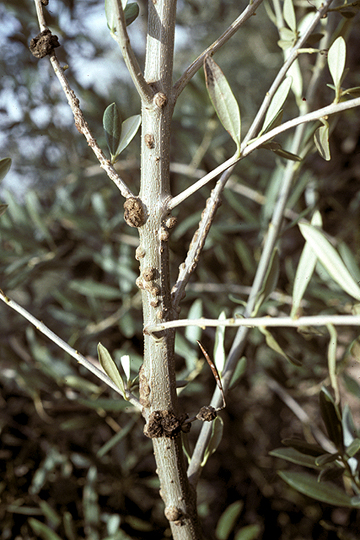
Olive knot | Olive
DISEASE: Olive knot
HOST: Olive (Olea europaea)
PATHOGEN: Pseudomonas savastanoi pv. savastanoi
SOURCE: M. Schroth
DISEASE: Olive knot
HOST: Olive
Tree with knots/galls on branches along with twig dieback, which is associated with knots. Fusarium and Diplodia spp. infect through knots and are thought to be main reason for dieback.
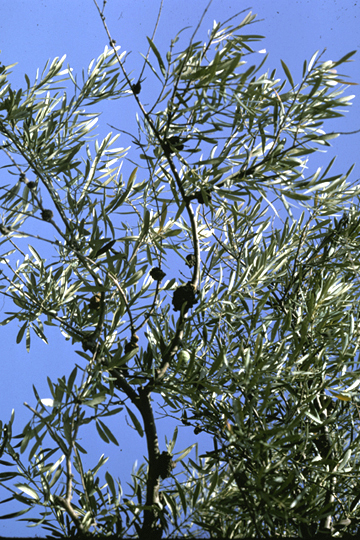
Olive knot | Olive
DISEASE: Olive knot
HOST: Olive (Olea europaea)
PATHOGEN: Pseudomonas savastanoi pv. savastanoi
SOURCE: M. Schroth


